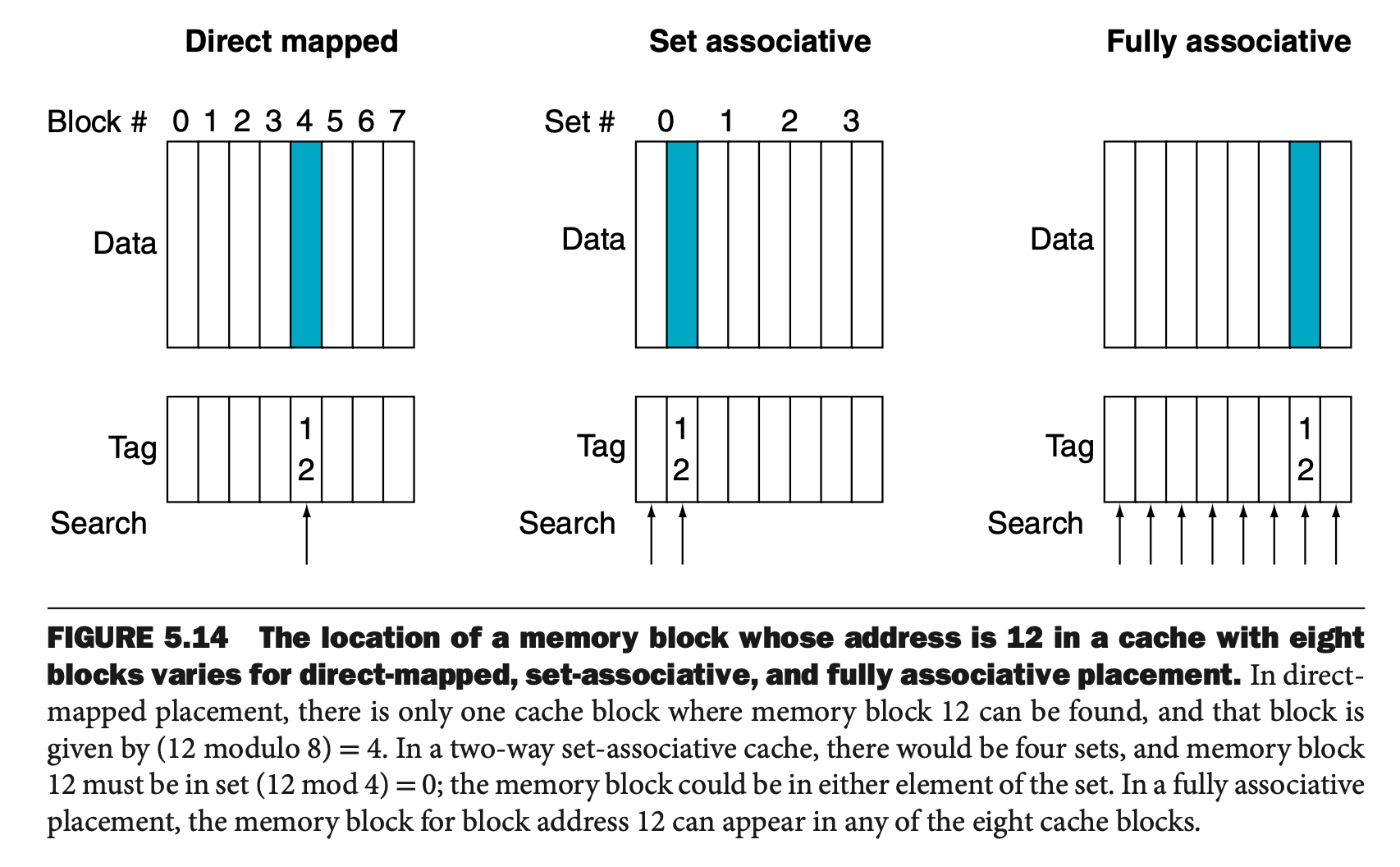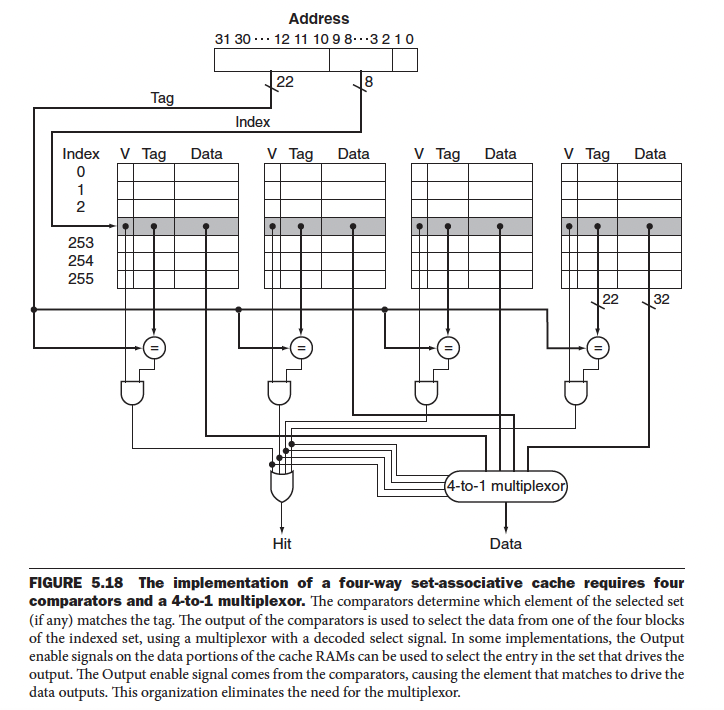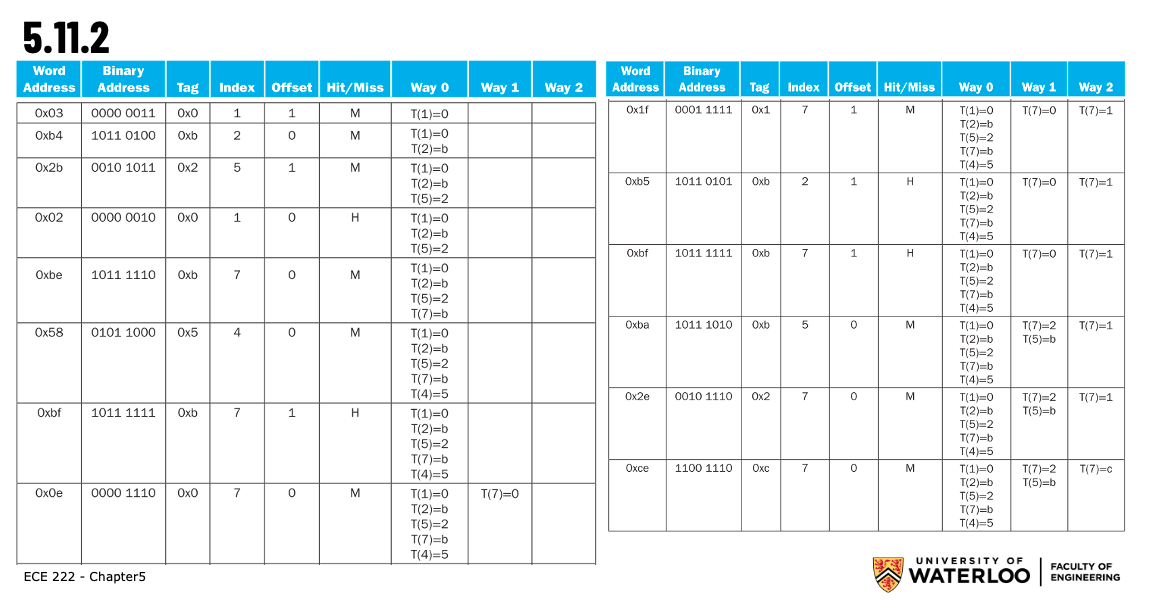Set Associative Cache
Associative caches are designed to reduce the rate of conflict misses. See this video: https://www.youtube.com/watch?v=quZe1ehz-EQ&ab_channel=MatthewWatkins
Set associative cache is the middle range of designs between direct mapped and fully associative cache.
- In a set-associative cache, there are a fixed number of locations where each block can be placed.
- -way set-associative cache = locations for a block
- lol unrelated but this is like the philosophy of naming K-Way N-Shot Learning
- An -way set-associative cache = each sets consists of blocks
- Each block in the memory maps to a unique set in the cache given by the index field, and a block can be placed in any element of that set. Thus, a set-associative placement combines direct-mapped placement and fully associative placement: a block is directly mapped into a set, and then all the blocks in the set are searched for a match. For example,
 Example of Implementation
Example of Implementation

Personal notes
So when you have the same index, but a different tag, you still have a miss, but instead of overwriting the data, you put it in a new set. If all the sets are occupied, then you overwrite the oldest piece of data.
In the image below, you have a 3-way set-associative cache.

Example
Consider a 4-way set associative cache with cache size of 4096 blocks, 4 word block size, with byte-addressable memory, and 64-bit address.
4-way set associative uses 4 blocks per set, so we have 4096 blocks / 4 blocks per set = 1024 total sets (10-bit index field)
- 4 words per block so thats 2 bits we need to index the word
- (64 - 2) - 10 - 2 = 50-bit tag index
- I subtract 2 remember, because of the Alignment Restriction
total number of tag bits = 50 X 4blocks/set X 1024 sets = 204.8K tag bits